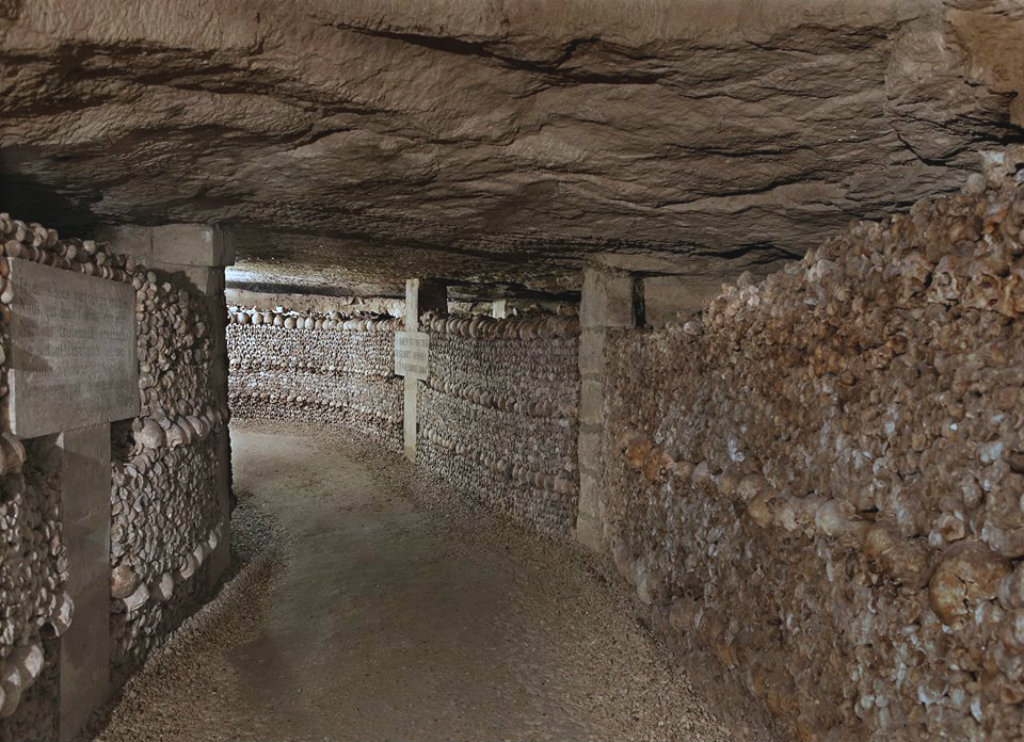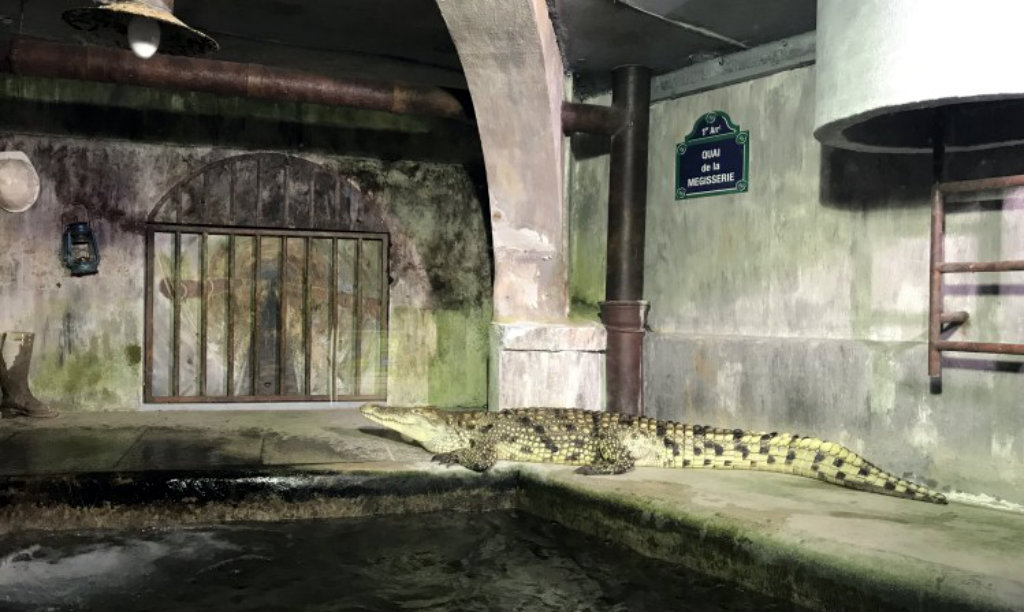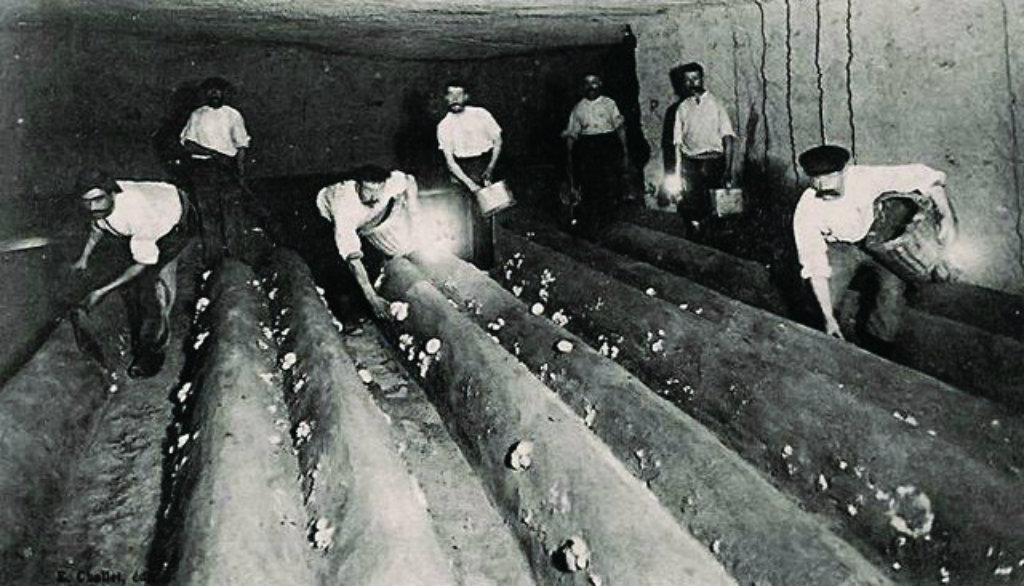
The Catacombs are one of Paris’s most popular tourist attractions, but this limited public access only scratches the surface of the more than 200 kilometers of hidden tunnels under the city. Here, we settle a couple of urban myths and highlight some of the more unusual activities taking place in the vast subterranean world beneath our feet.
1. A preserved bunker
If you travel regularly through Gare de l’Est, you might unknowingly pass by a discreet trapdoor leading down to a World War II bunker. Built a few years before the war so the staff could continue to direct trains in the event of an air attack, it was taken over by the Germans when they occupied Paris in 1940 but was not really used because there were few air attacks. The perfectly preserved bunker, with its war-era train maps and 70 workstations, is open to the public on Heritage Days.

2. The Métro on film
Thousands of people commute through the Porte des Lilas Métro station in north-east Paris every day, but one of its lines has been closed since 1929. Rather than becoming one of the city’s several “ghost stations,” the platform has played an important role in representing Paris on screen as a film set since the 1970s. Such notable movies as Amélie, Julie and Julia and Les Femmes de l’Ombre (Female Agents) have shot Métro scenes here. Don’t count on making your own video there, however: the fee is €15,000 for 10 hours.

3. Cataphilia
Entering the network of tunnels in the former limestone quarries beneath Paris has been illegal since 1955, but that has not stopped a flourishing social scene from developing there. So-called “cataphiles,” who are intimately familiar with the cartography of the tunnels, enter the underworld through manhole covers, even though the police regularly change the entrances and exits in an attempt to keep them out. A strong sense of community binds these subterranean explorers, who often hold parties and raves in the caverns.
4. Secret cinema
One of the cataphiles’ more astounding stunts was the creation of an entire underground cinema, complete with seats, a bar and a projector, discovered in a cavern beneath the 16th arrondissement in 2004. Authorities were mystified as to how and by whom it had been built. When police returned to find out where the electricity powering the cinema was coming from, they found the lines cut and a note saying, “Do not try to find us.” The mysterious allure of the cataphiles lives on.
5. Underground art
Visitors to Paris have a lot to look at in the Louvre and the Musée d’Orsay, but far beneath their feet in the tunnel network is another kind of gallery. The art on display ranges from small-scale graffiti to huge murals. Most of us will never see these works of art, but occasional photographic evidence reveals the underground mastery. Some “kata-artists,” among them Gilles Cyprès, have even built up something of a reputation for their subterranean work.

6. The crocodile under Paris
The story of a crocodile living under Paris is often considered an urban myth, but it is true. In 1984, workers discovered a two-year-old crocodile living in the sewers. Capturing it must have been one of the more unusual tasks undertaken by the firemen called upon to capture it. The crocodile now lives in an aquarium in Vannes, Brittany, in an enclosure designed to look like a Paris sewer.
7. The Phantom of the Opera’s real-life lake
In Gaston Leroux’s novel Le Fantôme de l’Opéra, the fictional architect of the famed Paris Opera House builds a secret underground palace for himself with a subterranean lake. While there is no palace, the “lake” actually exists. When the Opera House was built in 1862, draining the swampy foundations proved difficult, so the real architect, Charles Garnier, created a cistern to store the water. Today, Paris firefighters do their underwater training there.

8. Paris mushrooms
Champignons de Paris (Paris mushrooms) can be found in every supermarket in the capital, but few people know that they were once grown by farmers working in the abandoned quarries under Paris in the 19th century. Some accounts say this tradition was begun by deserters from Napoleon’s army who were hiding underground and needed to grow food. By 1880, more than 300 mushroom farmers were literally operating underground. Sadly, most Paris mushrooms sold in France today are not Parisian but grown in China.
Favorite
Very interesting, thanks! Now I understand how the metro scenes in Amelie and others were able to “clear out” a metro station for the scene. I thought that it would be difficult and expensive, and now I understand.
bonnie